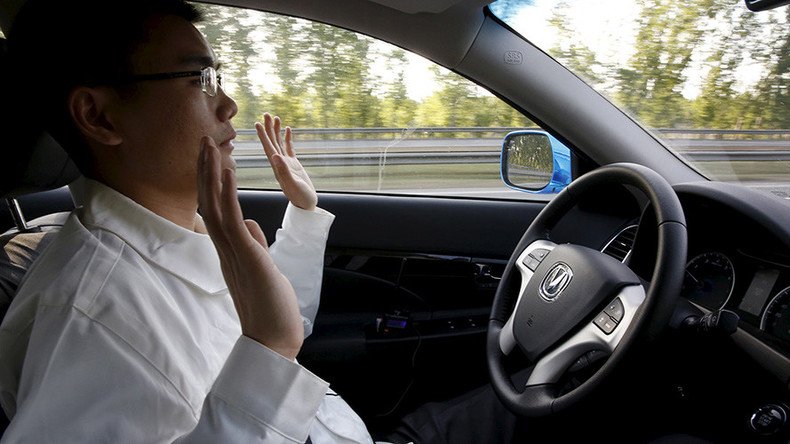Where the robot hits the road: ‘Driver-free zones’ proposed for self-driving cars

The American passion for cars is turning a new corner. Now a ban is being considered on all human drivers for a 150-mile stretch of highway. Meanwhile, solutions for pedestrians crossing in front of driverless vehicles are being developed as well.
The car of tomorrow could make drivers yesterday’s news – but only once the tech companies working on self-driving cars figure out how to digitize nuanced interactions. Autonomous car makers are striving to make their product safe for both passengers and pedestrians, but testing is still in various stages.
From knowing how to anticipate other cars on the road to understanding gestures from pedestrians, there’s a lot more to driving than just turning a wheel and hitting the gas.
This is a concept that Drive.ai understands and hopes to revolutionize with their unique take on driverless cars. The Silicon Valley startup believes that the experiences between driverless cars and pedestrians could be improved by focusing on human-robot interactions and developing technology that will allow cars to “learn” like an actual driver – just without high school driver’s education.
Waze for self-driving cars? #Google aims to autonomously avoid emergency vehicles https://t.co/yK0nqrWO7gpic.twitter.com/On7SdHkJ6N
— RT America (@RT_America) September 7, 2016
"Humans always break the rules,” Drive.ai president and co-founder Carol Reiley told Curbed. “There’s a reason so many self-driving cars have been rear-ended on the road.”
“They follow the rules too well, and don’t anticipate human behavior,” she added. “If you hard-code the rules, that’s not the right strategy.”
This is a unique point that rings true. After all, who among us doesn’t add an extra 5 miles per hour to every speed limit sign?
In order to blend verbal and nonverbal cues, the AI concept centers around using a “pictorial language akin to emojis,” Curbed reported. The purpose of this is to create a car with personality that can communicate its intentions as well as recognize them from pedestrians.
But one issue facing trials is the same issue that many motorists have: cyclists, the sworn enemy of drivers. While there is an assumption that driverless car technology will make the roads safer for all involved once they become the primary transportation method, that is a long way away and in the meantime, driverless cars will share the roads with all kinds of vehicles.
"Right now, we have no transparency," Reiley said. "We want to make sure that if it’s an autonomous car, cyclists know that we know they’re there. If the vehicle can’t see the cyclists, you’re going to cause an issue and accident."
The potential posed by this technology could be revolutionary, according to some experts.
“Long term, these vehicles will drive better than any human possibly can,” Danny Shapiro, senior director of automotive at Nvidia Corp., told Automotive News. “We’re not there yet, but we will get there sooner than we believe.”
In an effort to get us there faster, a group of technology veterans proposed banning human drivers on a 150-mile (241-kilometer) “driver-free zone” along an interstate highway that goes from Seattle to Vancouver.
Until they are given an international stretch of highway, self-driving car manufacturers will be forced to develop technology that can handle human drivers as well.
Jake Fisher, director of auto testing at Consumer Reports magazine, told Automotive News, “The most difficult thing for a self-driving vehicle to do is to deal with humans, because humans tend to be unpredictable.”
The US government has already released policy proposals on driverless cars, meaning that both industry and policy are shifting gear to prepare for the future, all while trying to figure out how to make pedestrians and driverless cars peacefully coexist.












